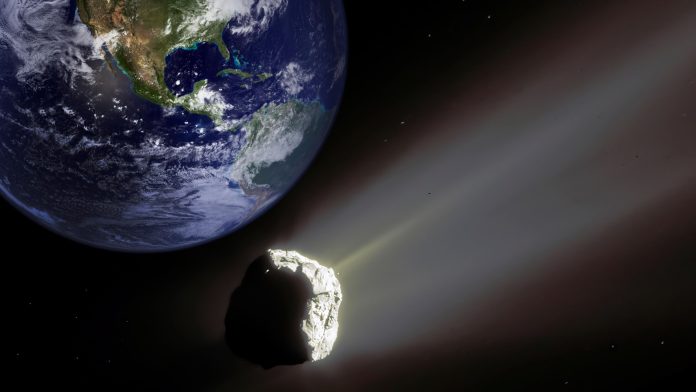Asteroids: The Unseen Danger Looming Over Earth!
Asteroids are ever-present in our universe, zipping past Earth like cosmic debris. Yet, occasionally, some of these celestial bodies make a beeline toward us, inviting thoughts of doom. But before you panic, take a breath: most of these asteroids are harmless, burning up in our atmosphere like shooting stars. Still, the thought of a cataclysmic impact can cause a stir, especially when we consider the last significant asteroid event that wiped out a majority of the dinosaurs 66 million years ago.
What NASA Knows: Monitoring Asteroids and Potential Risks
NASA and other space agencies are vigilant in monitoring for asteroids that may pose a threat. With the technology we have today, scientists keep a close eye on the sky, ready to act if a significant asteroid is detected on a collision course. They have even discussed extravagant plans involving deflecting asteroids to protect our planet.
Bennu: The Most Dangerous Asteroid on NASA’s Radar
One of the most closely monitored asteroids is Bennu. Currently, it poses the highest risk among known asteroids. The odds are surprisingly low; there’s about a 1 in 2,700 chance that Bennu could strike Earth on September 24, 2182. Weighing in at 74 million tonnes and measuring around 0.30 miles wide, Bennu would not bring global destruction. However, if it were to hit a populated area, the effects would be catastrophic, unleashing energy equivalent to 1.4 billion tonnes of TNT. NASA has even collected a sample from Bennu that returned to Earth in September 2023.
29075 (1950 DA): The Potential Extinction Event
Next up is 29075 (1950 DA), often considered the second-deadliest asteroid. This one packs a punch, measuring 0.81 miles wide with a staggering mass of 78 million tonnes. If this rock were to collide with Earth, it could unleash destruction on a massive scale, comparable to 75 billion tonnes of TNT. The risk factor here is a 1 in 34,500 chance that it could strike us on March 16, 2880.
2023 TL4: A Lesser Threat with a Distant Impact Date
Another asteroid worth mentioning is 2023 TL4. Currently, it has a 1 in 181,000 chance of striking Earth, but there’s no need to lose sleep over it; even if it did collide, that wouldn’t happen until October 10, 2119. This asteroid is smaller, at 0.2 miles wide, and possesses a mass of 47 million tonnes, with a potential impact force equivalent to 7.5 billion tonnes of TNT.
2007 FT3: A Focus of Immediate Concern
One asteroid that has captured attention is 2007 FT3. It is particularly noteworthy because potential impacts could occur within our lifetime, albeit with low likelihood. Earlier fears about a collision in October 2023 were dismissed by NASA, but another chance exists on March 3, 2030. The odds stand at 1 in 11.5 million, a comforting stat considering its 0.21 miles wide stature and mass of 54 million tonnes, comparable to a 2.6 billion tonne TNT explosion impacting regional areas.
1979 XB: The Mystery Asteroid
Then there’s 1979 XB, an enigma in the asteroid community. Last observed in 1979, details about it are scant. Estimates suggest it’s 0.41 miles wide and weighs around 390 million tonnes. Its chances of striking Earth are around 1 in 1.8 million for a collision on December 14, 2113. If it were to hit, the devastation would be cataclysmic, akin to 30 billion tonnes of TNT.
Understanding the Torino Impact Hazard Scale for Asteroids
NASA utilizes the Torino Impact Hazard Scale to gauge the potential threats posed by various asteroids. This scale ranges from 0 to 10. A 0 rating indicates that the likelihood of a collision is minimal, essentially zero, which applies to many small asteroids that burn up upon entering our atmosphere. Despite their potential danger, all the asteroids we’ve highlighted here still hold a zero risk rating.
At the far end of the spectrum, a rating of 10 implies a certain collision capable of causing global climatic disasters, events that occur on average once every 100,000 years or less frequently.
Conclusion: Keep Watching the Skies!
In conclusion, while the presence of asteroids in our solar system can evoke feelings of fear and uncertainty, rest assured that the risk posed by these celestial objects is relatively low—thanks to ongoing monitoring by agencies like NASA. The astronomical odds of collision remind us that, while we should keep an eye on the sky, we can largely focus on the more immediate challenges of life here on Earth. So sit back, relax, and let the scientists handle the cosmic threats. After all, the universe may be vast and filled with dangers, but it’s also fascinating and full of wonder!

